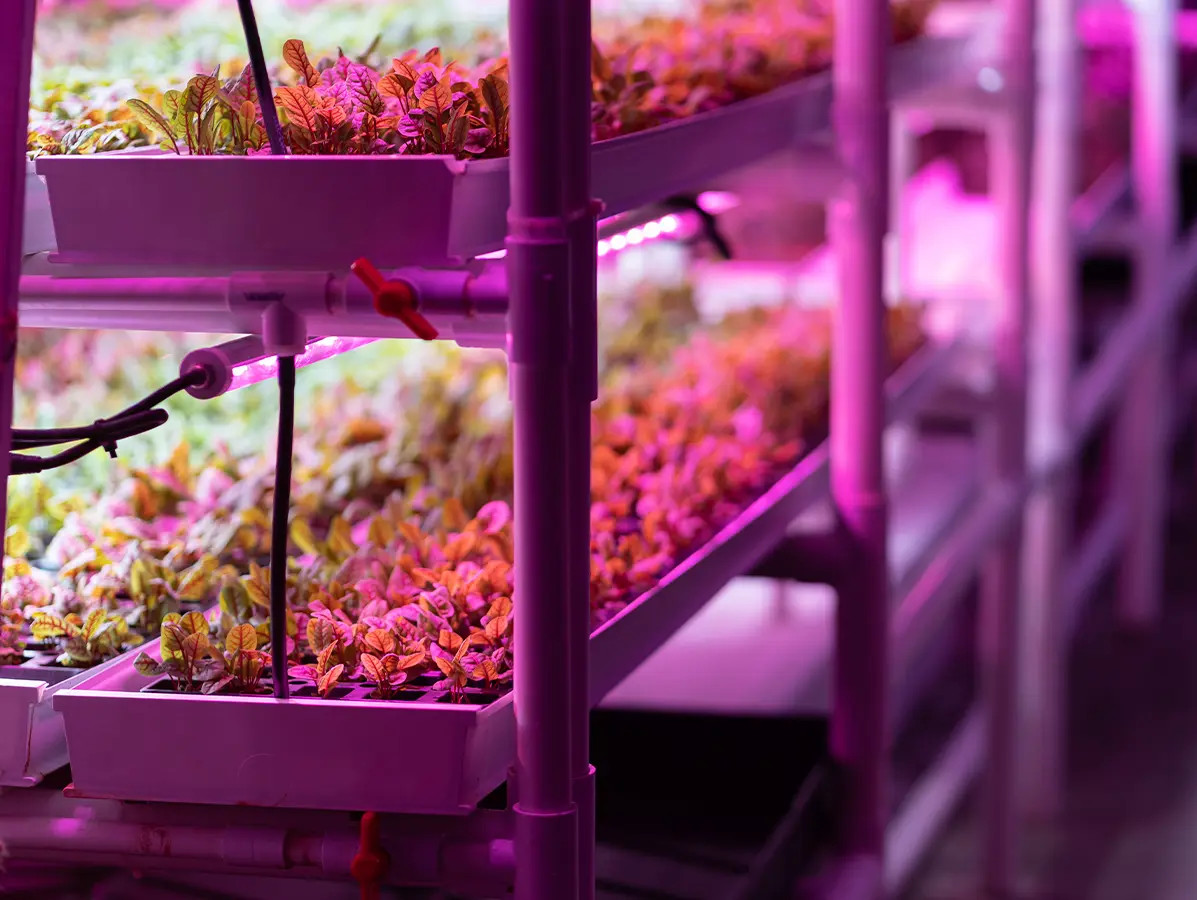We're currently searching through more than 4,000 articles, just a moment's patience...
We're currently searching through more than 4,000 articles, just a moment's patience...

Vertical farming, where crops are grown in layers, offers opportunities to produce food closer to consumers. With controlled environments, crops can even grow in extreme locations, such as deserts. However, this technique faces challenges, including high energy consumption. Research from Wageningen University & Research shows that a dynamic approach to environmental control can reduce energy consumption without sacrificing crop yield.
Lighting is crucial for plant growth in vertical farms, but not all plants require the same light intensity at all times. Researchers suggest that a variable lighting plan, tailored to the specific growth stage of the plant, can result in significant energy savings. This can also help to manage fluctuations in energy prices by using more electricity when rates are lower.
The techniques currently being developed for vertical farming can also benefit traditional greenhouse agriculture. In greenhouses, where sustainable energy sources are increasingly used, dynamic environmental control can help manage the availability and cost of electricity. This allows greenhouses to take advantage of these technological advances as well.
The progress in these techniques is making vertical farming increasingly efficient and more likely to be adopted on a larger scale in the future.
Source: Wageningen University & Research
Vakblad Voedingsindustrie is a project of b2b Communications BV.
© COPYRIGHT 2025 VOEDINGSINDUSTRIE | ALLE RECHTEN VOORBEHOUDEN
Powered by Wallbrink Crossmedia © 2025
Een abonnement kost € 80,- exclusief 9% BTW per jaar.

We work in accordance with the privacy legislation. After your registration you will receive an e-mail with a confirmation link. Only after you have clicked on this link will you be registered as a recipient of the newsletter. If you can't find the e-mail in your inbox, please also look at unsolicited e-mail.


Lorem ipsum dolor sit amet, consectetuer adipiscing elit. Aenean commodo ligula eget dolor. Aenean massa. Cum sociis natoque penatibus et magnis dis parturient montes, nascetur ridiculus mus. Donec quam felis, ultricies nec





